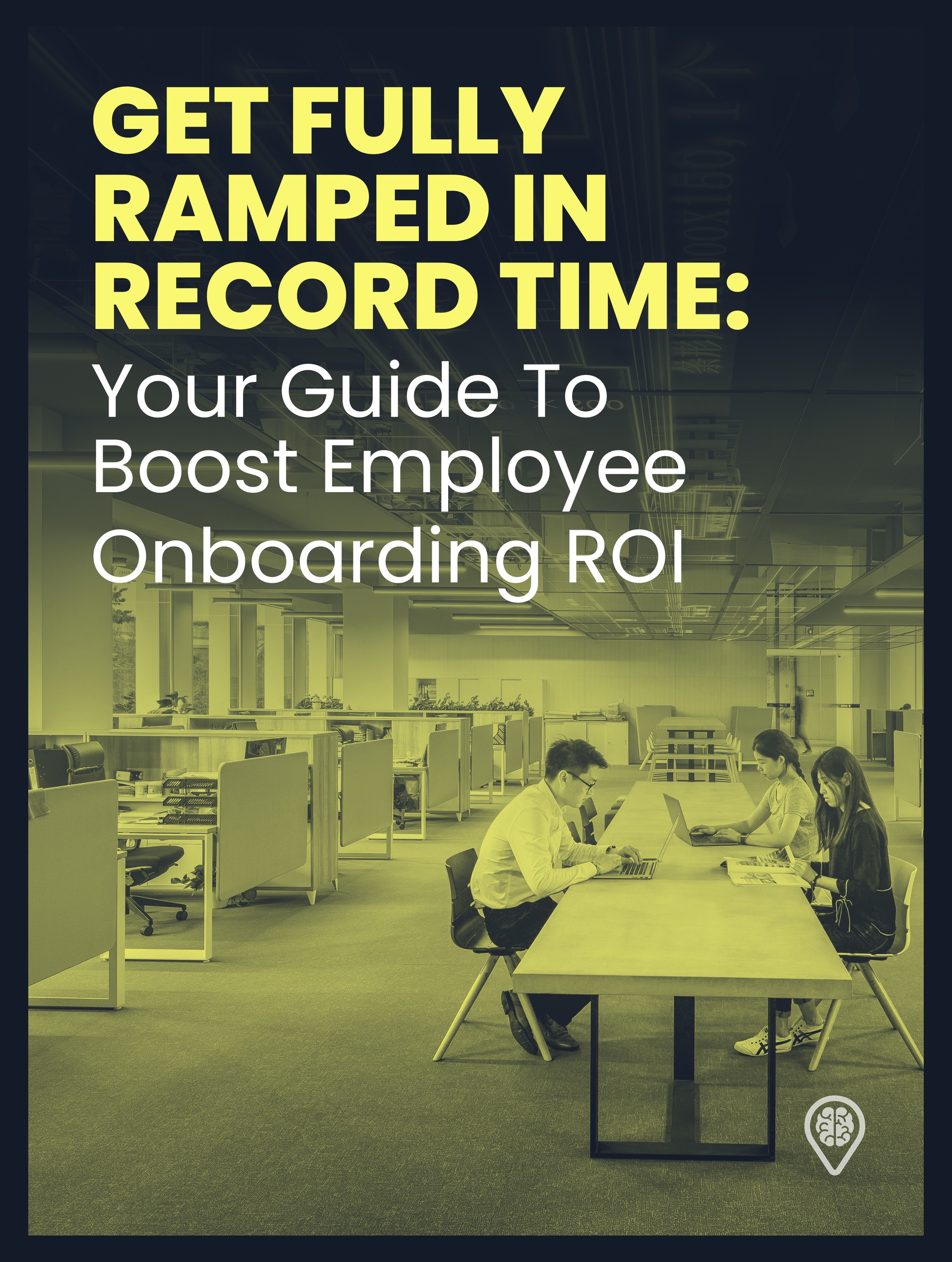How To Structure Information For Your Next Onboarding Course
The unfortunate reality is that many companies neglect to make their training courses valuable. This isn’t always due to a lack of effort or care factor; often, it’s simply because the course designers aren’t in possession of the facts. They design a course that is poorly structured, disengaging, and ignorant of the most important aspects of the job. But employee onboarding doesn’t have to be dry. It does not need to follow the typical corporate eLearning model that is often seen as a necessary evil. Done correctly, onboarding can be an engaging and valuable experience that new hires will appreciate—and more importantly, it can boost your ROI to greater heights.
Check eWyse’s case study that combined many interesting elements and themes in order to increase the engagement of learners. This resulted in employees eagerly waiting to receive another installment of the course, as the topic was valuable for them in terms of learning, but the course also engaged and surprised them with a fresh theme every time.

Designing A Valuable eLearning Course
Context truly is key when it comes to designing an effective eLearning course. As mentioned before, new employees need to understand their role within the company and their specific job responsibilities. But this is just one piece of the puzzle.
eLearning courses also need to engage your new hires. What structure are you using? Is it easy to follow? Are the activities and assignments engaging? Are you incorporating proven learning strategies, like gamification and mixed media?
At eWyse, the outline, which is the structure of the course, closely follows the needs analysis. Let’s put it this way. When you are building a house, you need good foundations. Similarly, when you are producing an eLearning course, you need a carefully planned outline. In a way, the outline is the foundation of every successful course.
Let’s run through some of the key strategies to designing a course that works.
Focus On The Right Content
The first port of call is to make sure your content is one hundred percent relevant and useful to the employees you are onboarding. A significant portion of run-of-the-mill eLearning courses are filled with jargon and useless information that only serves to confuse new hires. Make sure you are only including information that is absolutely essential for the employee’s job role and nothing more.
There are also situations when the same content is only relevant to a part of the audience. These situations can be solved by introducing branching scenarios. Carefully planned and implemented branching will allow those learners that are already familiar with the information to skip ahead while allowing the rest to still go through the information that is relevant to them. For a practical example, check eWyse’s Gamification Course about the art of making pizza. [2] In it, learners can skip the parts about making the dough if they already know it, while the others can still learn it. It is also important to add that the knowledge of a topic can be checked with thoughtfully placed questions, so even those learners who think they know some information might be proven otherwise and learn something new.
Additionally, any content should be structured in a way that is easy for the new hire to follow and digest. Break it down into manageable chunks, use simple language, and avoid overwhelming them with information.
For instance:
- Role-specific procedures
- Organizational policies and standards
- Information about the team or department they are joining
- Tools and technologies used in their role (not generic software that everyone in the company uses)
- The company’s values and mission statement, in very brief terms
Incorporate Engaging Activities And Assignments
eLearning often gets a bad rap for its lack of engaging elements—and honestly, this is a fair assessment. Companies neglect to make their courses interesting, opting instead for dry and uninspiring material.
Why not incorporate elements like gamification, videos, and interactive activities to keep your new hires engaged? Gamification in particular is known for its ability to motivate employees and keep them on their toes, playing on our natural competitiveness and desire for rewards.
While gamification uses interesting game elements to enhance the eLearning courses, depending on the topic and the target group, it is possible to create game-based courses as well. In them, the whole course material is presented in the form of a game. For example, check out the eWyse version of Jeopardy. [3]
Make sure your course is visually appealing as well. Use a mixed array of media, including images, infographics, and videos. Since multimedia and rich media are the main focus in eLearning, this will help keep your employees engaged and interested in the material.
Opt For A Well-Structured Onboarding Curriculum
One of the major downfalls to eLearning courses is their structure—and in particular, their pacing. Courses run for far too long and new employees are often overloaded with information. That’s why taking a bite-sized approach to onboarding training is often the best strategy.
Humans do not have a lengthy attention span when it comes to learning, and in fact, our average online attention span sits at around eight seconds. [4] We aren’t recommending that any business create an eight-second course; however, a 10–15 minute bite-sized course is far more manageable than something that drags on for 90 minutes.
Structure your course in a way that delivers each topic in a condensed and engaging manner. New employees should be able to complete the course in a single sitting, and they should feel like they have a good understanding of their role and responsibilities when they finish.
Focus Οn Memory Retention
If your employees need hours of extra training and onboarding on top of your course, the ROI it reflects isn’t going to be great. eLearning courses need to be designed in a way that helps employees remember the information they are taught, unlike cramming for a test and forgetting everything the next day.
Here’s an excerpt from 100 Things Every Designer Needs to Know about People, by Dr. Susan Weinschenk: “Repeating information, and the use of that information, forms new connections in your brain where memories are stored. Repeat it enough times, and it sticks. To further build on that, if you tie newly presented information to already-formed memories or experiences, then it’s easier for them to remember that information.”
So how can you apply this to employee onboarding?
Make sure you are incorporating repetition into your course design. New employees should be exposed to the same information multiple times, in different formats, and from different angles. And don’t stop there—make sure every module uses information from the prior module, to create a cohesive learning experience.
Academy Structure And Blended Learning
One way to maximize your onboarding ROI is to consider creating an academy structure. This approach divides learning into specific subject matter areas or job roles, allowing employees to focus on relevant content and get up to speed faster. It's like having mini-training courses that employees can complete at their own pace, with support from instructors and other learners.
Academy-style eLearning often pairs well with blended learning. For instance, perhaps your new employee follows each module they complete in the academy with a job-shadowing experience. Or they could put their new skills into practice with a series of real-world projects.
Either way, using a blended learning approach helps employees apply their newfound knowledge quickly and see the results of their efforts. This can be a major motivator and help keep your onboarding ROI high.
From eWyse Experience
Creating academy-style eLearning that is combined with blended learning can be extremely useful when having a large number of different materials and learning units to cover. Different F2F teachings can take place to accentuate the eLearning process. For example, F2F workshops conducted by the internal coaches or shadowing to learn by observing. These successfully combine with the eLearning courses for great results.
Download the eBook Get Fully Ramped In Record Time: Your Guide To Boost Employee Onboarding ROI to onboard with ease and stretch your L&D resources. You'll discover how to not only create a budget but stick to it by leveraging the right outsourcing partner and proven strategies. You can also join the webinar to learn the secrets of how to fully ramp in a flash.
References:
[2] Playing or Studying? With Game-Based eLearning We Can Have Both
[3] Say it quick, say it well – the attention span of a modern internet consumer
Additional Resources:
- 3C Approach
- Use branching scenarios in eLearning and increase students’ engagement
- Micro learning
- How to use multimedia and rich media in eLearning courses
- Why a bite-sized approach in eLearning is vital for your students?
- Attention Span in eLearning | Learn how to keep students’ attention









